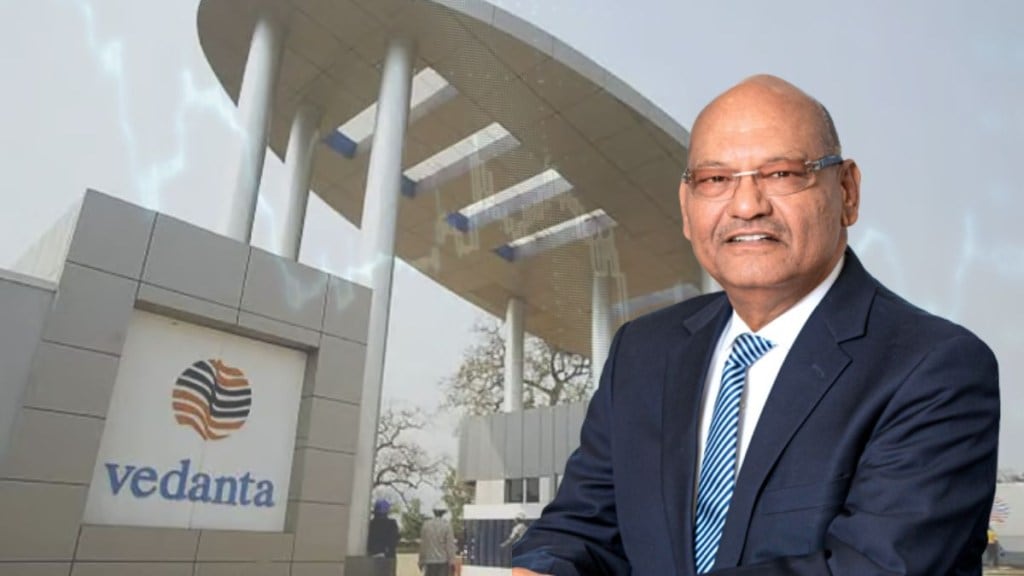Despite the release of Viceroy Research report which led to a drop of nearly 8 per cent intraday in Vedanta’s shares on Thursday before it trimmed some losses for the company, JP Morgan maintained a relatively confident stance on the mining major’s financial health. It continued to be overweight (OW) on most of Vedanta’s global bonds. On July 9, Vedanta’s shares dropped 8.85 per cent from their intraday high of Rs 461.50 to a low of Rs 420.65. As of date, the company’s market capitalisation stood at Rs 1.62 lakh crore.
The analyst report addressed a series of governance-related questions but concluded that key metrics, particularly Vedanta’s net leverage and the Indian government’s continuing oversight at Hindustan Zinc (HZL), offer sufficient reassurance to investors. “We address some of the key concerns about the credit below and remain comfortable with VDL’s leverage and the government’s oversight of HZL,” JP Morgan said.
Vedanta’s leverage under control
Excluding its stake in HZL, JP Morgan said, Vedanta reported an EBITDA of $3.1 billion in FY25 with a net leverage of just 2.2x, a level that does not indicate financial distress. Including HZL, net leverage falls further, given the latter’s near-zero debt position (0.1x). Although HZL is expected to ramp up capital expenditure, the brokerage firm said, leverage is projected to remain under control at about 0.5x.
Government oversight at HZL acts as safeguard
Further, JP Morgan focused on the role of Government of India, which continues to hold three board seats at HZL since its divestment in the early 2000s. In past instances, the government-nominated directors have also acted to prevent transactions that they consider will not be beneficial to HZL or its stakeholders. JP Morgan argued that this layer of oversight reduces the risk of unilateral decisions that could negatively impact the company’s financials or governance. “We believe the GoI retains oversight of major decisions, including capex plans,” it said.
Tax and legal disputes
Hindustan Zinc has reported tax and other claims of around Rs151.5 billion which are currently under litigation and have not been booked as liabilities. According to the brokerage firm, such legal disputes are common in heavily regulated sectors like mining and even comparable companies like JSW Steel face similar outstanding claims. And so, it said, these are seen as ongoing issues rather than red flags.
Old put/call option not a risk
According to the company’s disclosures in the past, the government had call/put options requiring VDL to purchase/sell its stake at a 50 per cent premium/discount to the market price of HZL shares. JP Morgan said that while the clause technically remains in place, the underlying condition — related to the location of a smelter project — has long since been resolved, with the government duly informed at the time. It is worth noting here that the project was to be completed by 2007, but HZL completed the smelter at a different location after informing the GoI. “We would be surprised if any breach had not been identified by the GoI over the past ~20 years,” it maintained
Cautiously optimistic outlook
Despite governance concerns and legal overhangs, JP Morgan maintained an OW stance on several Vedanta bonds, citing healthy cash flows, improving access to funding, and attractive yields ranging between 8 per cent and 10 per cent. In FY26, Vedanta raised funds worth $1 billion.
Still, risks remain. Key downside risks to JP Morgan’s recommendations included: (i) weaker commodity prices than expected (>10 per cent); (ii) large M&A (>$500 million- 1 billion) or capex plans; (iii) weak onshore banking access leading to high interest costs and refinancing pressure; and (iv) regulatory investigations or scrutiny.
Viceroy takes short position on Vedanta
Earlier, a US-based short-seller Viceroy Research issued a report on the company’s UK-based parent Vedanta Resources (VRL), saying it “resembles a Ponzi scheme”. The report addressed a series of
“Viceroy is short the debt stack of Vedanta Resources, the heavily indebted parent and majority owner of Vedanta Limited. The entire group structure is financially unsustainable, operationally compromised, and poses a severe, under-appreciated risk to creditors,” the report stated.
The short-seller also alleged that VRL is systematically diverting funds from Vedanta Ltd to manage its own debt burden, increasing the latter’s debt and depleting its cash reserves. According to the report, this extraction undermines VDL’s core value — a key asset backing VRL’s obligations to its lenders.
AGM response: Strategic silence
On July 10, however, Vedanta held its 60th annual general meeting (AGM), wherein the company sidestepped questions on the report, saying that they will “get back soon”. At the AGM, Vedanta Chairman Anil Agarwal outlined the group’s 3D strategy — demerge, diversify, and deleverage – to unlock growth potential. He said the demerger plan was met with shareholder approval and the restructuring is in process.
Before this, the company had issued a statement calling the Viceroy report “malicious combination of selective misinformation and baseless allegations”. Vedanta Group said that the Viceroy report only contains compilation of various information already in the public domain and the short-seller has tried to “sensationalise the context to profiteer from market reaction”.

